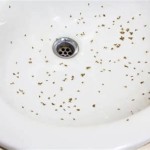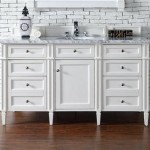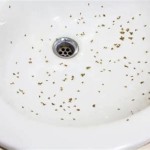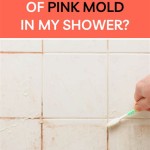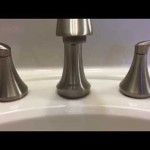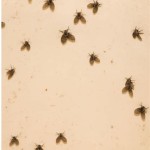I Have Little Black Ants In My Bathroom: Understanding and Addressing the Infestation
The discovery of small black ants in a bathroom is a common household concern. These pests, often referred to as "sugar ants" or "pavement ants," are attracted to the moisture and potential food sources frequently found in this environment. While their presence may seem insignificant initially, a small infestation can quickly escalate, making it crucial to understand the reasons behind their appearance and implement effective control measures. Identifying the ant species accurately and tracing their entry points are essential first steps in resolving the problem. This article will explore the factors that attract little black ants to bathrooms, methods for identifying them, and strategies for eradication and prevention.
Identifying Little Black Ants
Accurate identification of the ant species is paramount for selecting the appropriate treatment. Little black ants (Monomorium minimum) are small, typically measuring between 1/16 and 1/8 of an inch in length. They are uniformly black and have a smooth, shiny appearance. Their size distinguishes them from carpenter ants, which are significantly larger. Pavement ants, another common household invader, are also small and dark but often have grooves on their heads and thoraxes. Observing the ants' behavior and trails can provide further clues. Little black ants tend to forage in distinct trails, often following plumbing lines or gaps in the walls. They are attracted to sweet and greasy foods, making crumbs, spills, and even soap residue potential food sources in the bathroom.
To confirm the identification, a magnifying glass can be used to examine the ant's physical characteristics. The presence of a two-segmented petiole (the narrow waist between the thorax and abdomen) is a key characteristic of ants in the Monomorium genus. Consulting online resources with high-resolution images or contacting a local pest control professional can also aid in accurate identification. Misidentification can lead to the use of ineffective treatments, prolonging the infestation and potentially allowing it to spread to other areas of the house.
Knowing the difference between little black ants and other common bathroom pests is also important. Drain flies, for example, are small, fuzzy flies that are attracted to standing water in drains. Silverfish are wingless insects with a silvery-grey appearance, often found in damp areas. While these other pests may indicate underlying moisture problems that also attract ants, addressing them requires different control strategies.
Understanding the Attraction: Why Bathrooms Attract Ants
Bathrooms offer a combination of factors that make them attractive to little black ants. Moisture is perhaps the most significant draw. Leaky faucets, showerheads, and pipes provide a constant water source. Condensation on walls and floors after showers or baths can also create a humid environment that ants find appealing. Standing water in sinks or bathtubs is an obvious attractant. Ants require water to survive, and bathrooms often provide readily accessible sources.
Food sources, although less obvious than moisture, are also a factor. Soap residue, toothpaste spills, hair, and dead skin cells can all serve as food for ants. Even the smallest crumbs or drips from sugary or greasy products brought into the bathroom can attract them. Poor hygiene practices, such as leaving dirty towels or neglecting to clean spills promptly, exacerbate the problem.
Shelter is another important consideration. Cracks and crevices in walls, floors, and around plumbing fixtures provide ideal nesting sites for ants. These spaces offer protection from predators and temperature fluctuations. Ants can also nest behind loose tiles, under sinks, or inside wall voids. These hidden nesting sites make it difficult to eliminate the entire colony, as surface treatments may not reach the source of the infestation.
Access points into the bathroom are also crucial. Ants can enter through small cracks in walls, gaps around pipes, or even through window frames. They often follow plumbing lines or electrical wires, using these as highways to navigate through the house. Identifying and sealing these entry points is essential to prevent future infestations.
Effective Strategies for Eradication and Prevention
Controlling a little black ant infestation in the bathroom requires a multi-pronged approach that addresses both the immediate problem and the underlying causes. Simply killing the visible ants will not solve the problem, as the colony will continue to send out more foragers.The first step is to eliminate the food and water sources that are attracting the ants. This involves thoroughly cleaning the bathroom, paying particular attention to areas where moisture and food debris accumulate such as underneath sinks, around toilets, and inside shower stalls. Leaky faucets and pipes should be repaired promptly. Surfaces should be wiped down regularly to remove soap residue and spills. Proper ventilation of the bathroom is important, especially after showers or baths, to reduce humidity levels. Ensuring that towels are hung up to dry and that standing water is eliminated will also help to deter ants.
Next, identification and sealing of entry points is crucial. Carefully inspect the bathroom for cracks and crevices in walls, floors, and around plumbing fixtures. Seal these gaps with caulk or other appropriate sealant. Pay particular attention to areas where pipes enter the wall or floor. Check window frames for gaps and seal them as well. This will prevent ants from entering the bathroom from outside or other parts of the house.
Ant baits are an effective method for eliminating the entire colony. These baits contain a slow-acting insecticide that the ants carry back to their nest, poisoning the entire colony. Different types of ant baits are available, including liquid baits and gel baits. Place the baits near areas where ants have been observed foraging, but out of reach of children and pets. It is important to allow the ants to feed on the bait freely without disturbing them. Avoid spraying insecticides directly on the ants or the bait, as this will deter them from feeding on it.
In some cases, professional pest control services may be necessary to eliminate a severe or persistent infestation. Pest control professionals have access to a wider range of insecticides and application techniques that may not be available to homeowners. They can also identify and treat hidden nesting sites that are difficult to reach. If the infestation persists despite your efforts, or if you are uncomfortable handling insecticides, contacting a pest control professional is the best course of action. It is important to choose a reputable pest control company that uses safe and effective methods.
Preventive measures are essential to avoid future infestations. Maintaining a clean and dry bathroom is crucial. Regularly cleaning the bathroom, repairing leaks promptly, and sealing entry points will help to deter ants. Store food items in sealed containers and avoid leaving food debris in the bathroom. Consider using natural repellents, such as peppermint oil or vinegar, in areas where ants are likely to enter. By taking these preventive measures, you can create an environment that is less attractive to ants and reduce the risk of future infestations.

Are Ants Attracted To Your Bathroom Terminix

How To Stop Ants From Invading Your Bathroom Identification And Prevention Tips Tabor Pest Control

Boise Idaho Pest Control Pestcom

How To Get Rid Of Little Black Ants In Your Bathroom Housekeeping Wonderhowto

Niagara Pest Control Why Are There Carpenter Ants In The Bathroom

How To Get Rid Of Sugar Ants John Moore Services

Boise Idaho Pest Control Pestcom

Nj Pest Control Pros Say It S Common To Find Ants In The Bathroom

How To Get Rid Of Ants A Complete Guide 2024

How To Get Rid Of Ants Inside Outside True Value
Related Posts
